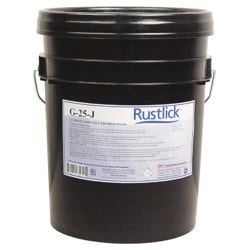
Synthetic Metalworking Fluids
Synthetic metalworking fluids lend themselves well to grinding and light-duty machining. Synthetics work great for grinding because they allow for swift settling of the small fines created during grinding. Grinding fluids should be cleaner than machining fluids because they cover a larger work area and can splash more than a machining operation. Whereas water-soluble oils will absorb tramp oils, synthetics typically will reject the oils - allowing them to be skimmed from the surface of the metalworking fluid. In some applications, this feature allows synthetics greater longevity in the sump. Many synthetics work well for machining all metals and some of the newer and more expensive synthetics can approach the tool life of water-soluble oils. The disadvantage of synthetics is that some components such as lubricants and rust preventives can be used up before the rest of the metalworking fluid.
Semi-Synthetic Metalworking Fluids
Semi-synthetic fluids are a good compromise between the water-soluble oils and synthetics - they are hybrid products of both water soluble oils and synthetics. Therefore, they carry both the advantages and disadvantages of both groups. Semi-synthetics are less likely to cause rust than synthetics, will still provide rust protection because of their oil content and will emulsify tramp oils. Semi-synthetics are suited ideally for machining and grinding of cast iron. Manufacturers will formulate different grades of products, so that there are products available for all types of machining operations. Each category of coolant can have low- to high-grade products. Typically, the higher the price of the product, the better performance it will give. Just because a metalworking fluid is lower in price does not mean that the customer will save money in the long run, because tool life can be affected greatly by metalworking fluids.